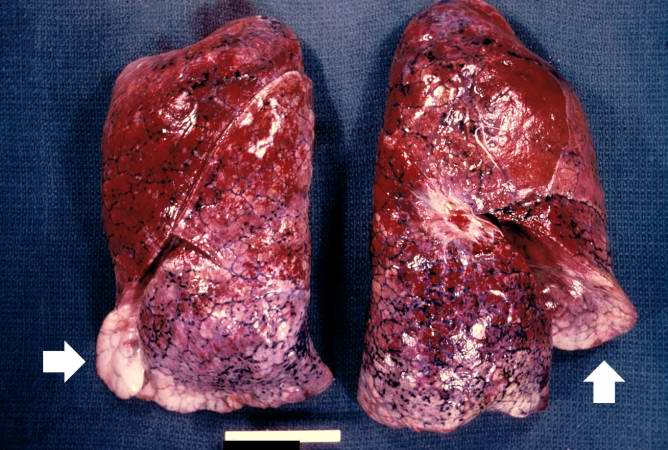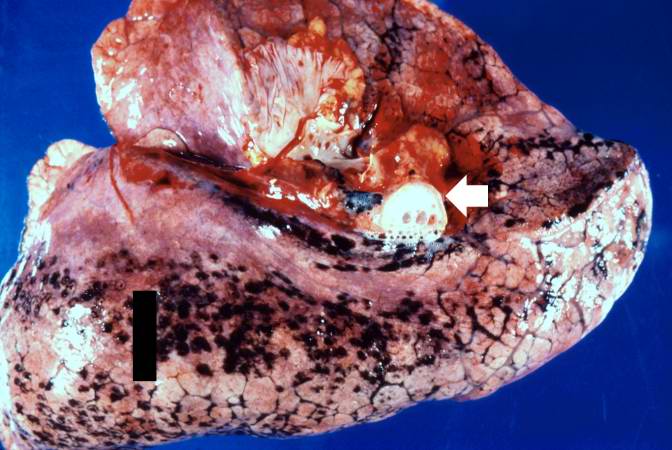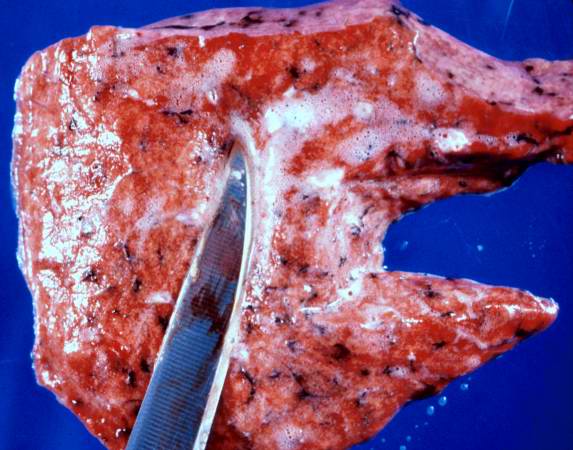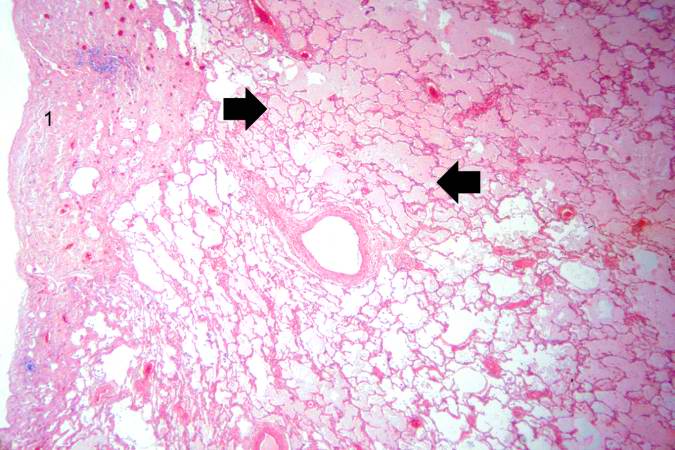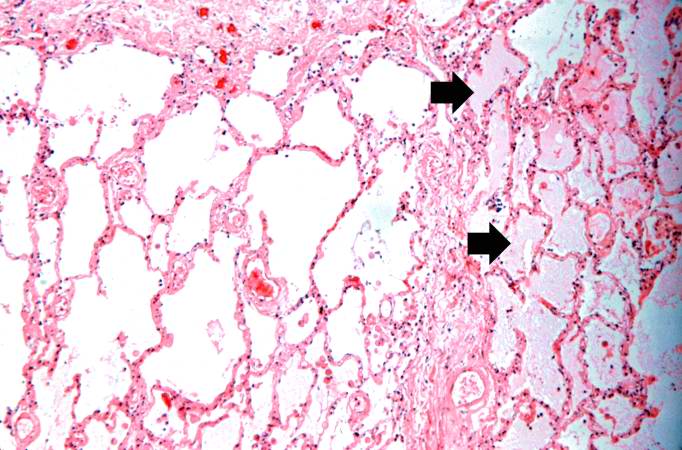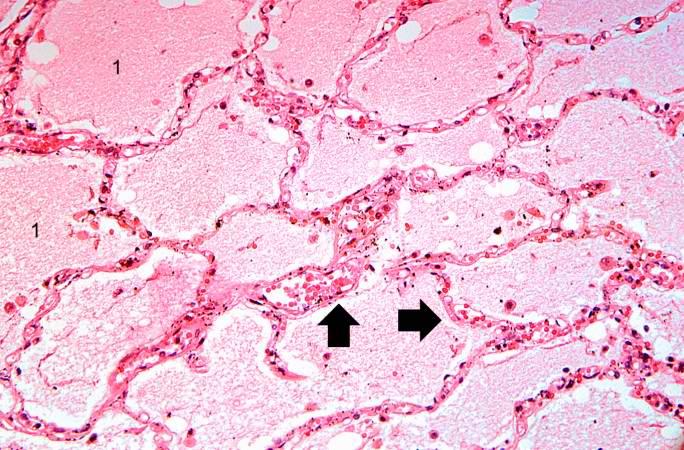Pulmonary edema pathophysiology
|
Pulmonary edema Microchapters |
|
Diagnosis |
|---|
|
Treatment |
|
Case Studies |
|
Pulmonary edema pathophysiology On the Web |
|
Risk calculators and risk factors for Pulmonary edema pathophysiology |
Editor-In-Chief: C. Michael Gibson, M.S., M.D. [1]
Overview
Pulmonary edema is due to either failure of the heart to remove fluid from the lung circulation ("cardiogenic pulmonary edema"), or due to a direct injury to the lung parenchyma or increased permeability or leakiness of the capillaries ("noncardiogenic pulmonary edema").[1]
Gross Pathology Findings
-
This is a gross photograph of lungs that are distended and red. The reddish coloration of the tissue is due to congestion. Some normal pink lung tissue is seen at the edges of the lungs (arrows).
-
This is a gross photograph of lung demonstrating acute pulmonary congestion and edema. A frothy exudate fills the bronchus (arrow).
-
This gross photograph demonstrates the frothy exudate that is being extruded from the lung tissue.
Histopathology
-
This is a low-power photomicrograph of lung from this case. The lung section has a pale-red color indicating proteinaceous material within the lung.
-
This is a higher-power photomicrograph of lung. The edema fluid within the alveoli is visible at this higher magnification (arrows). The thickened pleura (1) is on the left.
-
This is a higher-power photomicrograph showing edema-filled alveoli in the right portion of this section (arrows).
-
This high-power photomicrograph illustrates the edema fluid within the alveoli (1) and the congestion (RBCs) in the alveolar capillaries (arrows).
References
- ↑ Ware LB, Matthay MA. Acute pulmonary edema. N Engl J Med 2005;353:2788-96. PMID 16382065.
